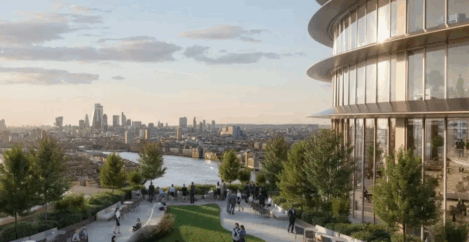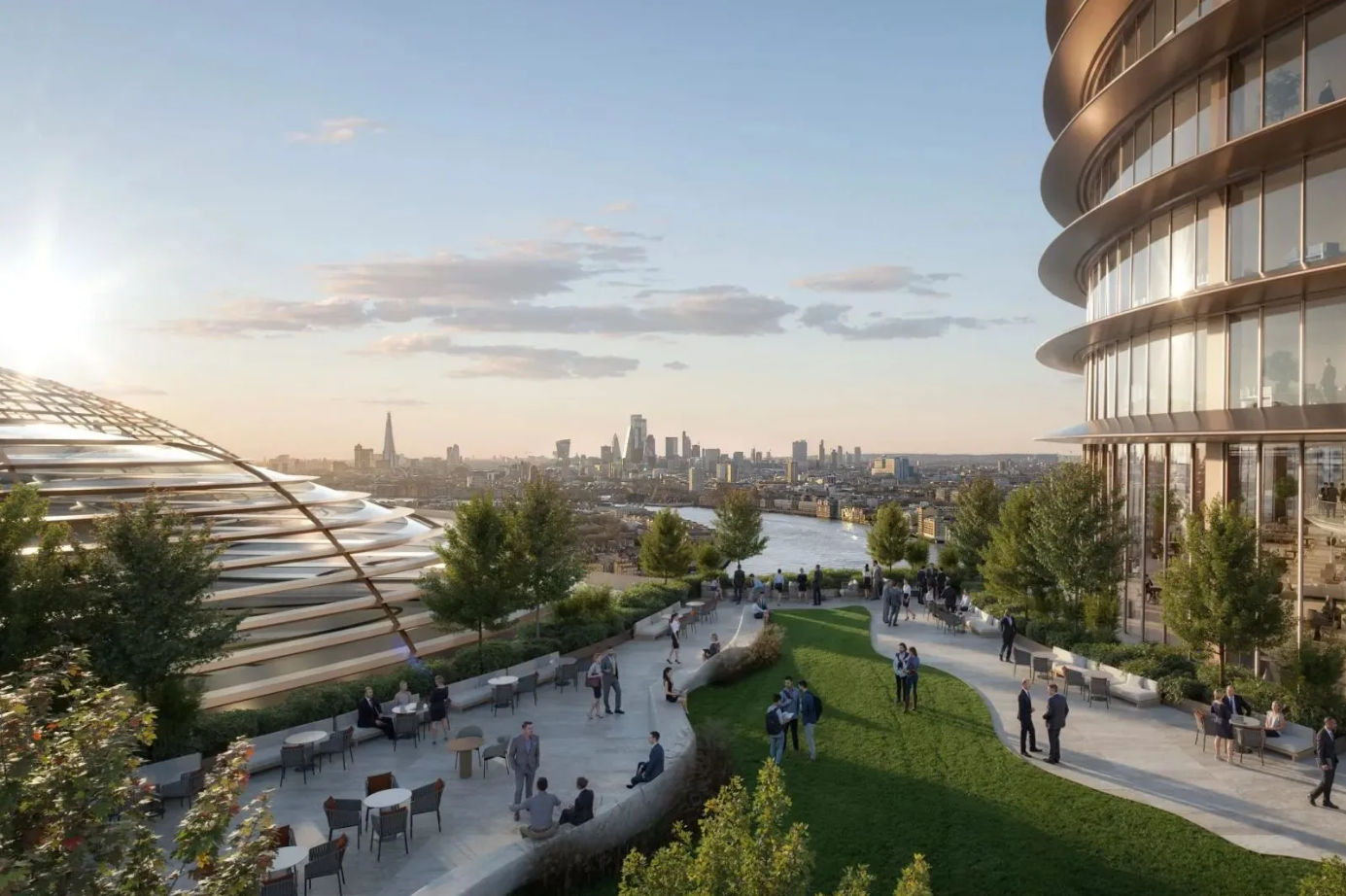November 28, 2025
Time to admit we were wrong about Canary Wharf and other business districts
 There was a time during and after the pandemic when it looked like time was up for the world’s major business districts. For a start Canary Wharf looked like it would need to completely reinvent itself as firms started to relocate to smaller more central premises. Instead of housing tenants such as HSBC it would focus on becoming a mixed-use space with more homes and leisure facilities. Hell, we even published a feature setting that all out ourselves. But it’s funny how things turn out. The latest news is JP Morgan’s announcement of a vast new headquarters building in the area. The bank, already one of the largest employers in the UK financial sector, has confirmed plans for a three million sq ft tower on the waterfront that will accommodate 12,000 staff and represent an investment estimated at £3 billion.
There was a time during and after the pandemic when it looked like time was up for the world’s major business districts. For a start Canary Wharf looked like it would need to completely reinvent itself as firms started to relocate to smaller more central premises. Instead of housing tenants such as HSBC it would focus on becoming a mixed-use space with more homes and leisure facilities. Hell, we even published a feature setting that all out ourselves. But it’s funny how things turn out. The latest news is JP Morgan’s announcement of a vast new headquarters building in the area. The bank, already one of the largest employers in the UK financial sector, has confirmed plans for a three million sq ft tower on the waterfront that will accommodate 12,000 staff and represent an investment estimated at £3 billion.
It is one of the largest single office commitments made in Britain for more than a decade and comes at a moment when the narrative about Canary Wharf’s future has shifted radically. Only two years ago, Docklands was routinely described as a district in decline. A succession of major tenants, including HSBC and Clifford Chance, had chosen to relocate to central London, vacancy rates were rising and building valuations appeared to be under pressure.
Most media commentary, including our own, questioned whether the area could maintain its status as Europe’s most recognisable financial district. Yet those predictions have unravelled. The pattern of departures has not only slowed but reversed somewhat. A growing roster of companies, across banking, technology, professional services, retail and leisure, has begun to choose Canary Wharf, and its landlord, Canary Wharf Group, now expects its strongest leasing year in more than a decade.
JP Morgan’s decision is the most visible signal of this change. The new tower, designed by Foster + Partners, will be the largest in the UK by floor area, surpassing 22 Bishopsgate and bringing to London one of Europe’s biggest single office buildings. The bank commissioned an economic study estimating that construction alone could contribute nearly £10 billion to the UK economy and support more than 7,800 jobs across construction and related industries.
This not to say that the momentum towards more mixed-use has stopped. Once complete, the development will incorporate wellness facilities, terraces, restaurants and extensive public realm improvements, including new parkland, a rejuvenated dock edge and upgraded pedestrian access to the riverside. The project is subject to planning approval, and the bank anticipates a six-year build period.
For the government, the announcement arrives at a politically fortunate moment. The Chancellor Rachel Reeves took time out from the Budget fallout to describe the commitment as a multibillion-pound vote of confidence in Britain’s economic direction, coming only a day after banks avoided the tax increases many had feared from the budget.
JP Morgan’s chief executive, Jamie Dimon, linked the investment to the UK’s focus on economic growth, emphasising London’s long history as an international trading centre and its importance to the health of the broader economy. The bank will continue to maintain its existing London offices, including at Victoria Embankment and 1 Cabot Square, while also renovating the interiors of 25 Bank Street during the new tower’s construction.
A new identity
The timing of the move aligns with Canary Wharf’s broader resurgence. After years in which the district was criticised for feeling isolated, overly corporate and lacking the vibrancy of the City or the West End, Canary Wharf Group began a long-term strategy to reshape its identity.
That effort has accelerated significantly since Shobi Khan became chief executive in 2019. The landlord has invested heavily in diversifying the estate’s uses, expanding its retail, hospitality and leisure mix and opening up more of its waterfront areas. In 2008, office leases accounted for 96 percent of the group’s rental income; that figure has now fallen to around 75 percent, a shift driven largely by developments in the past few years.
The introduction of more than 40 new restaurants since 2020, including notable names such as Hawksmoor, Dishoom and Barbarella, alongside a growing number of retailers such as Fortnum & Mason and Diptyque, has helped give the estate a broader appeal. Alongside these additions, Canary Wharf has positioned itself as a centre for competitive socialising and cultural activity, with venues including Fairgame, Electric Shuffle and The Cube drawing visitors beyond office hours.
The arrival of a new theatre, which secured the worldwide debut of The Hunger Games: On Stage, marked another symbolic departure from the estate’s former image.
Residential development has also played a central role in the shift. From almost no housing five years ago, the estate now includes more than 3,000 homes, mixing rental, private sale and affordable accommodation. Canary Wharf Group expects the resident population to rise to around 7,000 by 2027.
The transformation of the public realm, especially around the docks, has introduced more greenery, pedestrian routes and outdoor amenities. Khan argues that the area’s waterways are one of its strongest advantages and that recent investment has been focused on making these spaces more accessible and appealing.
The result has been a notable increase in footfall. Visitor numbers, which reached 72 million last year, are expected to exceed 75 million in 2025, far above pre-pandemic levels. Transport usage reflects similar trends. Data reviewed recently shows that journeys via the Tube, the Docklands Light Railway and the Elizabeth line at Canary Wharf are now higher than in 2019, even as parts of central London continue to lag. The Elizabeth line in particular has improved the area’s connectivity, reducing journey times to key locations and making the district more practical for commuters and leisure visitors alike.
A corporate revival
Corporate demand has strengthened as well. Revolut has chosen the estate for its global headquarters, while companies such as Zopa, BBVA and Hershey’s have all taken new space. Even HSBC, once a symbol of the exodus narrative, has since negotiated additional space at the Wharf. Banks requiring more regular office attendance for their teams have added further momentum, though Canary Wharf Group argues that the revival extends well beyond return-to-office policies.
JP Morgan’s commitment adds significant weight to this shift but forms part of a wider pattern across the financial sector. Goldman Sachs has revealed plans to double the capacity of its Birmingham office, creating around 500 new positions. The bank opened the site in 2022 to house its technology operations and now intends to use it as a platform to expand its involvement in artificial intelligence, digital infrastructure and other high-growth areas of the economy.
Local political leaders have welcomed the move as a sign of confidence in the region’s talent base and business environment, with Birmingham positioning itself as a growing centre for financial and professional services.
Other institutions are investing heavily in their UK footprints. Citigroup is undertaking a substantial renovation of its 1.2 million sq ft Canary Wharf tower, at a cost thought to exceed £1 billion, as part of its long-term plan to maintain a significant presence in London.
JP Morgan itself recently committed up to £350 million to expand and upgrade its Bournemouth campus, which employs more than 5,300 people. Collectively, these investments suggest a sector that, despite structural shifts in working patterns, remains prepared to invest in large, modern office environments.
For Canary Wharf, the combined effect of such commitments is reshaping perceptions. Where the estate was once seen as a precarious, monocultural office district, it is now increasingly viewed as a mixed-use neighbourhood with a more diverse economy and stronger visitor appeal. The arrival of a tower on the scale of JP Morgan’s proposed headquarters reinforces this trajectory, positioning the Wharf as a long-term home for global institutions while also broadening its cultural and residential offer.
Challenges remain, particularly in a commercial property market that continues to adapt to hybrid working and evolving tenant expectations. Yet the turnaround at Canary Wharf is significant. What was recently described as a sterile and declining environment now records stronger footfall than much of central London, supported by new amenities, better connectivity and rising residential demand. With more corporate leases in discussion, further retail openings planned and continued investment in public spaces, Canary Wharf Group expects 2026 to exceed 2025 in both activity and occupancy.
JP Morgan’s proposed tower may ultimately become the most visible symbol of the district’s renewed momentum. More broadly, it reflects the bank’s long-term commitment to the UK and to London’s role in global finance. For a district once thought to be struggling with an exodus of tenants, the return of large-scale investment on this scale suggests a different story altogether: one of reinvention, diversification and growing relevance in a rapidly changing urban landscape.















